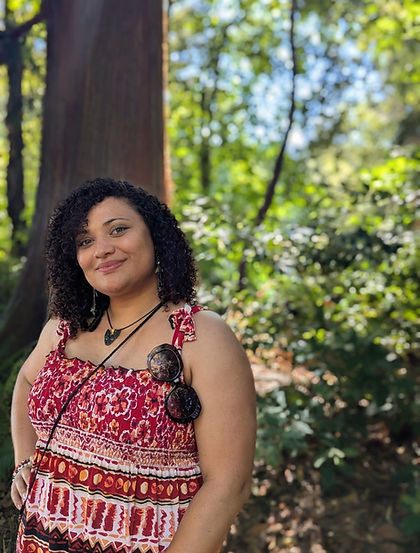

Jasmine Manny
Aquatic & Fisheries Science ⋅ Microbial Community Ecology ⋅ Parasite Ecology ⋅ Budding Physiological Ecologist
Thanks for visiting my site! I am currently a PhD student in the UC Davis Ecology Graduate Group working in Dr. Anne Todgham's Ecophysiology Lab. I am excited to have the opportunity to build skills and study how organism's manage under stressful conditions so we can better address and mitigate human-produced changes to ecosystems. I'm interested in working with Chinook salmon, which I have learned are culturally, economically, and ecologically important for many reasons here in California and across the Pacific Northwest. During my master's work with Dr. Cheryl Courtney-Hogue at CSU, Northridge, I assessed flatfish health indices, parasitic infection, and gut microbial communities across a gradient of treated wastewater discharge exposure in Santa Monica Bay off the coast of Los Angeles. I am interested in all things ecology, especially how aquatic organisms respond to multiple stressors, including both physical (temperature, pH, nutrients, dissolved oxygen etc.) and biological (parasitism, predators, disease). I've been fortunate enough to do research in multiple settings (academia and agency studies) and across multiple systems (water quality, invertebrates and fishes in either estuarine and coastal marine environments). My major career goal is to do research and teach science courses at the community college and/or university level. To learn more about my interests and research experiences please have a look at the rest of my site :)
A Slime Serenade?
The Wonders of Fish Mucus, Physiology & TEK
My lab group (Todgham Lab) specializes in ecophysiology, which is the study of the relationships between the physiological aspects of organisms and their environment. This comic represents a research topic that I would like to pursue for my doctoral dissertation, which is to investigate how developing Chinook Salmon (species of ecological concern) cope with environmental stressors when preparing for outmigration to the ocean. My current plan is to focus on the skin mucosal microbiome in developing Chinook and potential links to physiological parameters involved with environmental stress and disease tolerance. It is important to note that Marine Sisk, the fisheries supervisor (and daughter of Chief Caleen) of the Winnemum Wintu tribe, plays a key role in helping protect winter-run Chinook in Northern California. The tribe recently signed a co-stewardship agreement with NOAA Fisheries and several other entities to bring Chinook back and restore the land. Much of the background information in this science comic that I created is sourced from the NOAA Fisheries FAQ page on Chinook Salmon. In my research, I also hope to learn and incoroporate current wisdom and explore overlapping goals of fellow researchers at Davis, agencies, and the local and regional community, with a particular focus on Traditional Ecological Knowledge (see here: The Orginal Salmon Stewards) and intersections with western science.

Living in the Muck:
Santa Monica Bay Flatfish
The aim of my master's thesis project was to assess the extent of physiological stress on benthic fish inhabiting specific regions of an ecosystem that has been impacted by long-term inputs of treated and untreated wastewater. Flatfish live in contaminated marine sediments where pollutants like heavy metals and chlorinated hydrocarbons accumulate near wastewater discharge sites. Parasitic infection can influence how fish respond to pollution by increasing or decreasing the susceptibility of hosts to the effects of wastewater pollutants. The fish gut microbial community composition can serve as a useful additional measure to standard physiological stress markers. For example, gut microbes play a pivotal role in host health by regulating homeostasis, immunity, metabolism, and susceptibility to environmental contaminants. Thus, the gut microbiome may be influenced by parasitic infection and pollutant exposure.
The Hyperion Water Reclamation Plant in Santa Monica Bay (SMB) is the largest wastewater treatment plant in the western United States, and has historically contributed millions of gallons of domestic, commercial, and industrial treated effluent daily into the bay. Pacific sanddabs, Citharichthys sordidus, were collected from Santa Monica Bay and analyzed for parasites, gut microbiota, and somatic indices. I hypothesized that there would be significant changes in gut microbial community composition along a pollution gradient and among fish with different levels of parasite burden. Determining the current biological zone of impact of wastewater inputs throughout marine coastal areas is important for improving future management of benthic communities in Southern California. Stay tuned for what I found. I will be submitting to a peer-reviewed journal very soon!
.jpg)
